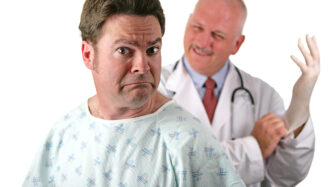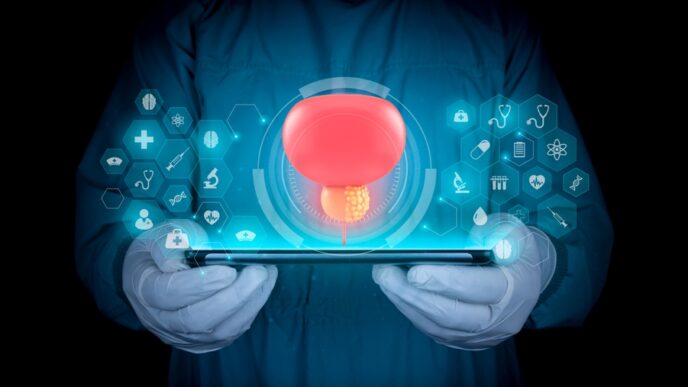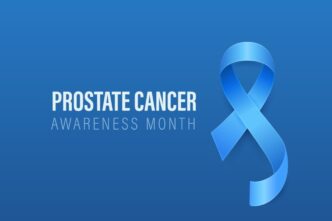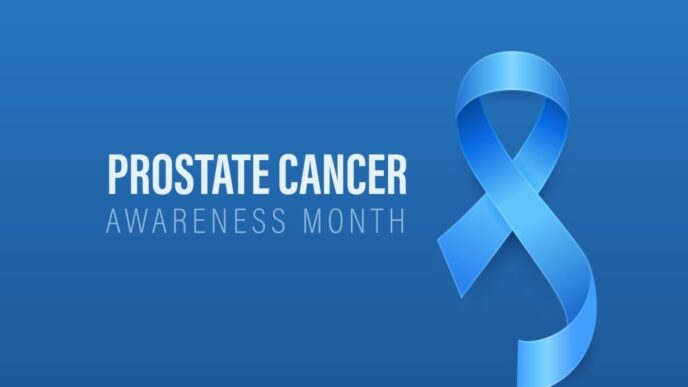Think prostate checks are embarrassing, painful, or make you less of a man? Think again. Malaysian men could be in a whole lot of pain or even dying unnecessarily because of these myths. Here’s what actually happens when you see a urologist for prostate check.
WORDS LIM TECK CHOON
 FEATURED EXPERT FEATURED EXPERTDR YEOH WEI SIEN Consultant Urologist Sunway Medical Centre Damansara |
Prostate cancer is now the third most common cancer among Malaysian men.
Unfortunately, nearly 70% of cases are only caught when it is already too late — at advanced stages when treatment options become limited and survival rate decreases.
This is compounded by the fact that many men are hesitant to seek medical attention until the symptoms are severe.
Dr Yeoh Wei Sien puts it bluntly: “I think there is an element of stoicism among men, where health issues are often brushed aside with the belief that they will resolve on their own.”
When it comes to issues that affect their urinary or prostate health, most men are especially uncomfortable and personal, while the idea of a physical examination can trigger anxiety or embarrassment.
A CLOSER LOOK AT THE PROSTATE
- The prostate is a walnut-sized gland that sits below your bladder, surrounding part of your urethra or the tube that carries urine out of your body.
- It is part of your reproductive system, producing fluid that nourishes and protects sperm.
As men age, the small gland can cause big problems such as:
- Benign prostatic hyperplasia (BPH). The prostate enlarges, squeezing the urethra and making urination difficult
- Prostatitis, or inflammation of the prostate, often causing pain and urinary issues
- Prostate cancer
Dr Yeoh emphasizes the interconnected nature of prostate health.
“Problems with the prostate could lead to the infection of other bodily systems, if left untreated,” he says.
See a doctor if you experience symptoms such as:
|
Because many prostate problems develop quietly, a routine prostate check or exam can catch issues before they become serious.
WHAT HAPPENS DURING A PROSTATE CHECK?
The reality of prostate check is far less dramatic than the horror stories you may have heard.
Step 1: The Conversation
Dr Yeoh walks us through a typical appointment:
- “We start by asking about symptoms, lifestyle, and general health,” he explains.
- He adds, “If the prostate appears to be the main concern, we then focus on urinary patterns and risk factors.”
The entire discussion is a professional discussion about the patient’s health. The doctor wants to understand the patient’s symptoms, family history, and concerns. No judgment, just facts.
Step 2: The Physical Exam (If Needed)
Here comes the part that makes men squirm: the digital rectal exam (DRE).
What really happens is this:
- The doctor inserts a gloved, lubricated finger into the patient’s rectum to feel the prostate gland through the rectal wall.
- This allows the doctor to check the size, shape, and texture of the patient’s prostate.
Most men are surprised by how quick (usually less than 30 seconds) and tolerable it is.
“Most patients even walk away saying it was not nearly as uncomfortable as they had imagined!” Dr Yeoh says.
Step 3: Additional Tests (If Required)
Modern prostate care goes beyond just physical exams. Depending on the patient’s situation, the doctor may further recommend:
- PSA blood test to measure prostate-specific antigen levels in the patient’s blood.
- Urine tests to check for infections or other abnormalities.
- Imaging studies such as ultrasound or magnetic resonance imaging (MRI) for a detailed look at your prostate.
- Biopsy or taking small prostate tissue samples for further investigation, if cancer is suspected.
|
| This article is part of our series on tips and advice on men’s health, sex life, and fertility. |













